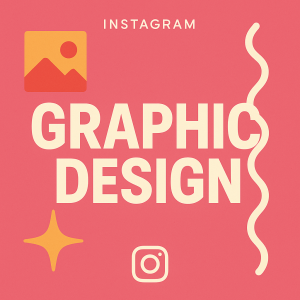How High-Quality Graphics Increase Social Media Engagement: A Data-Backed Look
 Scroll through any social media feed, and the pattern becomes clear: bold, well-designed visuals grab attention, whether it’s an Instagram post, a tweet with an image, or a Facebook ad, the quality of the graphics often determines whether users stop to look or keep scrolling. But beyond personal observation, what does the data say? In short, high-quality visuals drive engagement. Here’s how.
Scroll through any social media feed, and the pattern becomes clear: bold, well-designed visuals grab attention, whether it’s an Instagram post, a tweet with an image, or a Facebook ad, the quality of the graphics often determines whether users stop to look or keep scrolling. But beyond personal observation, what does the data say? In short, high-quality visuals drive engagement. Here’s how.
Better Visuals, Better First Impressions
First impressions matter on platforms like Instagram and Pinterest, which are built around visuals. However, even on LinkedIn or X (formerly Twitter), posts with strong imagery tend to stand out. HubSpot reports that tweets with images receive 150% more retweets than those without.
Simply put, good visuals buy you a second of attention. That second can lead to a like, share, or comment.
The Psychology of Design
Part of the reason quality graphics perform better is tied to how our brains respond to design. Color, composition, typography—they all influence how we feel and how we react. Bright colors, clean layouts, and consistent branding help build trust and recognition.
In one study from Venngage, marketers said that original graphics (as opposed to stock photos or plain text) were the most effective visual content for driving engagement. This makes sense: custom visuals signal professionalism, creativity, and authenticity—all of which help users connect with a brand or message.
Graphics also improve comprehension. When paired with text, a relevant visual can increase understanding by up to 89%, according to research from the Social Science Research Network. That’s especially useful for posts that explain ideas, summarize data, or aim to persuade.
Visuals and Platform Algorithms
Most social platforms reward engagement. Their algorithms prioritize posts that users interact with—such as likes, shares, comments, and saves—because engagement is a signal of quality. And engagement often starts with a scroll-stopping image.
On Instagram, for example, high-quality visuals don’t just catch a user’s eye—they also boost discoverability through hashtags and the Explore page.
Data from Brands and Marketers
Marketers know this intuitively, and the numbers support it.
- A 2023 report from Social Media Examiner found that 74% of marketers incorporate visual content into their social media strategy, and 80% consider visuals to be “very important” or “critical” for performance.
- According to Canva, branded graphics (like quote cards, infographics, or social ads) get up to 3 times more engagement than plain posts.
- Buffer tested posts with and without visuals across multiple platforms. On Facebook, image-based posts saw a 37% increase in engagement; on Twitter, the increase was over 55%.
Professionally designed graphics also help with brand consistency. When users see the same colors, fonts, and design style across posts, they start to associate those visuals with your brand. That recognition fosters trust, and trust in turn leads to interaction.
Mobile Matters
It’s also worth noting that most users browse social media on their phones. That means visuals need to be optimized for small screens. High-resolution images, large readable text, and clear focal points all become even more critical.
Low-quality or cluttered visuals don’t just look bad—they make your message harder to understand. On a phone, that’s all it takes to lose a user’s attention.
Professionally designed graphics are built with this in mind. They prioritize clarity, simplicity, and impact—all of which contribute to stronger performance on mobile platforms.
How to Improve Your Visuals (Without a Design Team)
You don’t need to hire an agency to see better results. Here are a few practical tips:
- Use consistent branding: Stick to a color palette and font set across your posts.
- Keep it simple: Don’t overcrowd your graphics. One clear message per image is enough.
- Invest in templates: Tools like Canva, Adobe Express, or Figma offer customizable templates that look professional and save time.
- Test what works: Run A/B tests with different designs to see which ones get the best engagement.
- Prioritize mobile design: Use large fonts, high contrast, and vertical formats when possible.
The Bottom Line
There’s no magic formula for social media engagement, but high-quality visuals give your content a real advantage. They attract attention, enhance comprehension, support brand recognition, and integrate seamlessly with platform algorithms. And the data is clear: better graphics lead to better performance. In an increasingly crowded digital space, that edge matters.

 Images created by AI can display pixel configurations that are repetitive or strange, which can’t be seen with the human eye.
Images created by AI can display pixel configurations that are repetitive or strange, which can’t be seen with the human eye.